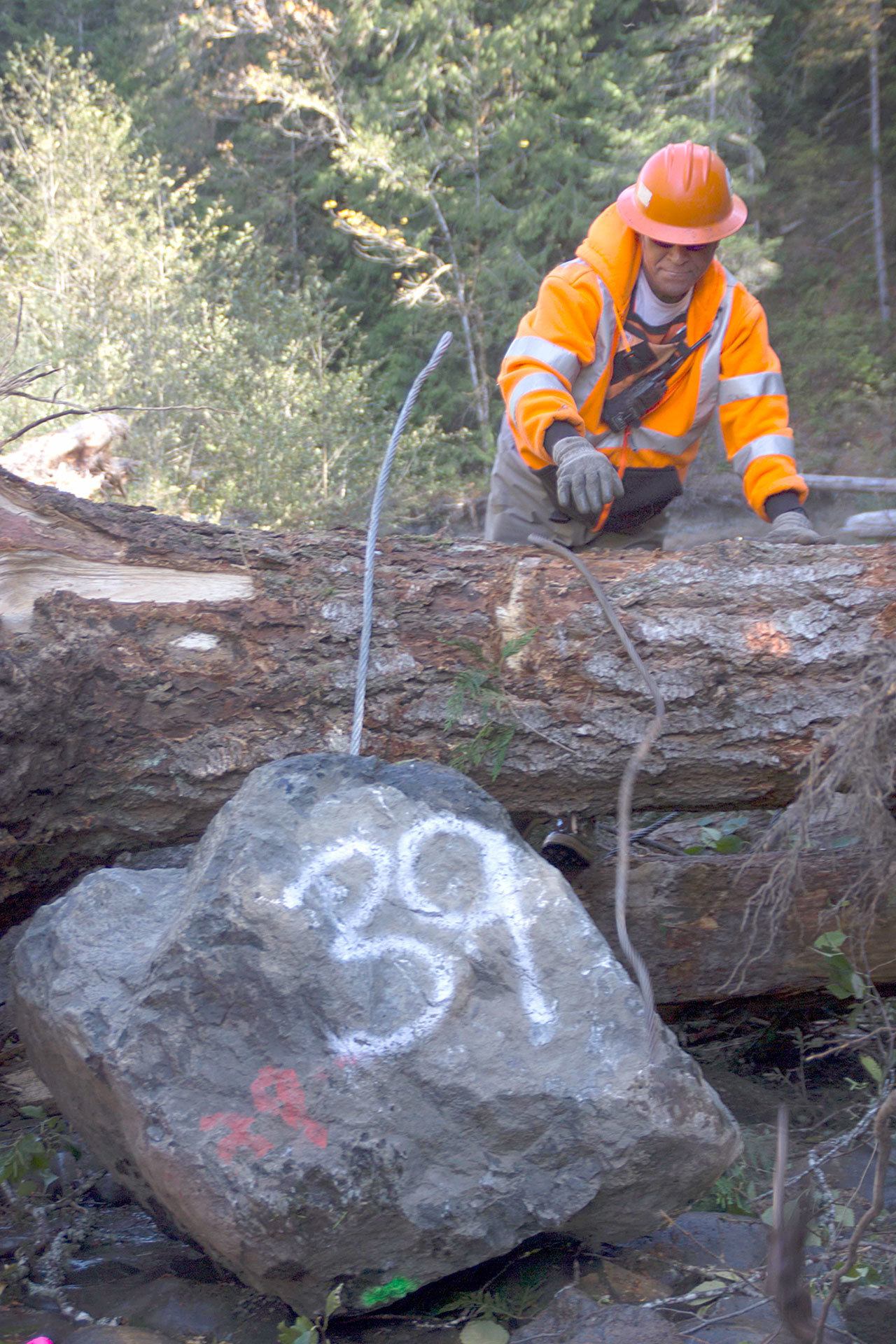By Tiffany Royal
Northwest Indian Fisheries Commission
SEQUIM — In building logjams for salmon habitat in the Gray Wolf River, the Jamestown S’Klallam Tribe took lessons from the river itself.
By building structures out of logs with rootwads and using rocks to anchor them, they mimicked how a river would naturally create jams with logs and rocks that tumble downstream during high flows.
“We used an innovative engineering design, coupled with helicopter delivery of materials to avoid having to use heavy equipment in the river channel,” said Hilton Turnbull, the tribe’s habitat biologist, about the $495,00 project built in two days.
“The idea was to build structures in areas where they would reconnect the river to its adjacent floodplain, allow anchoring points for additional wood moving through the system and also provide refuge for fish to escape the main channel during higher flows,” he said.
Salmon habitat in this area of the Gray Wolf River, a tributary of the Dungeness River, was degraded by wood removal projects in the 1960s and never recovered, said Randy Johnson, the tribe’s habitat program manager.
“Logjams are naturally reforming in the river, but slowly,” Johnson said. “We want to help out the imperiled fish a bit — chinook, steelhead and bull trout, all of which are on the Endangered Species Act list, plus coho and pink — all of which use this river.”
This is a fast-flowing powerful river, as evidenced by the cobblestone river banks, Johnson said.
“The logjams will slow the water’s velocity and allow for fine sediment and gravel to settle, creating better habitat salmon need for laying eggs,” he said.
The tribe and Olympic National Forest worked together on the project to create habitat for salmon and char.
Planning for the project began in 2013 and it was funded in 2014, but the tribe waited to construct it until this fall to avoid overlapping construction during a pink-salmon-run year, Turnbull said.
How is it funded? I gave her the list of funding and resources that Robert had given me.
Funding and resources for this project come from Salmon Recovery Funding Board, Puget Sound Acquisition and Restoration Fund, the U.S. Forest Service and the tribe.
Upon completion of this large wood enhancement project, the tribe will have completed three major floodplain restoration projects in the Dungeness in 2016, including a major floodplain property acquisition/conservation, and the replacement of the damaged trestle along the Olympic Discovery Trail at Railroad Bridge Park.
________
Tiffany Royal is the information officer for the Hood Canal/Strait of Juan de Fuca area for the Northwest Indian Fisheries Commission.

